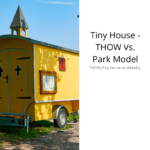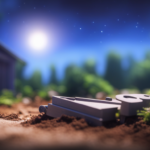Beginners Guides
How To Build Your Own Tiny House

Were you aware that over the last 50 years, the standard size of a newly built single-family house in the United States has expanded by almost 1,000 square feet?
With the rising costs of housing and a desire for simplicity, it’s no wonder that many people are turning to tiny houses as a solution.
Building your own tiny house can be a rewarding and cost-effective way to create a space that fits your needs and lifestyle.
In this article, I will guide you through the process of building your own tiny house, from determining your needs and goals to connecting utilities and moving in.
By following these steps and using the right tools and materials, you can create a comfortable and efficient home that is uniquely yours.
So let’s get started and build your dream tiny house!
Key Takeaways
- Building a tiny house can be a rewarding and cost-effective solution for those seeking simplicity and affordability in housing.
- Maximizing space through multifunctional furniture and built-in storage solutions is crucial in tiny house design.
- Incorporating sustainability options into the design, such as using eco-friendly materials and energy-efficient appliances, is important for environmental consciousness.
- Thorough research and compliance with regulations are necessary for obtaining permits, connecting utilities, and ensuring a successful move-in process.
Determine Your Needs and Goals
Before you start building your tiny house, it’s important to determine what you need and what goals you want to achieve with your new home. Identifying your needs will help you design a space that is functional and suits your lifestyle.
Consider the number of people that’ll be living in the house and their specific requirements. This’ll help you determine the size and layout of your tiny house.
To maximize space in your tiny house, it’s essential to identify space-saving solutions. This could include incorporating multi-purpose furniture, such as a sofa that converts into a bed or a dining table that folds down when not in use. Additionally, utilizing vertical space by installing shelves or storage units can help you make the most of your limited square footage.
Incorporating sustainability options into your tiny house design is also a great idea. This could involve using eco-friendly materials, such as reclaimed wood or recycled insulation, to reduce your environmental impact. Installing energy-efficient appliances and utilizing renewable energy sources, such as solar panels, can help you minimize your carbon footprint.
By determining your needs and goals, identifying space-saving solutions, and considering sustainability options, you can create a tiny house that meets your requirements and aligns with your values.
In the next section, we’ll discuss how to design your tiny house and bring your vision to life.
Design Your Tiny House
Once you’ve got the blueprint for your cozy little dream home, it’s time to unleash your creativity and start crafting the perfect space.
Designing your own tiny house allows you to personalize every aspect and incorporate the latest tiny house design trends.
One of the key challenges in tiny house design is maximizing space. With limited square footage, it’s crucial to make every inch count.
To maximize space in a tiny house, consider utilizing multifunctional furniture, such as a bed that can fold up into a sofa or a dining table that can be tucked away when not in use. Opting for built-in storage solutions, like under-bed drawers or overhead cabinets, can help keep your tiny house organized and clutter-free.
In terms of design trends, many tiny house enthusiasts are embracing minimalist aesthetics, incorporating clean lines, neutral colors, and natural materials for a sleek and modern look. Additionally, incorporating large windows and skylights can make your tiny house feel more spacious and connected to the outdoors.
Now that you have a solid design plan, it’s important to obtain necessary permits and regulations to ensure your tiny house meets all legal requirements.
Obtain Necessary Permits and Regulations
To make your cozy dream home a reality, make sure you obtain the necessary permits and regulations, ensuring that your tiny house meets all legal requirements. This step is crucial to avoid any legal issues or setbacks during the construction process. Here are some important considerations to keep in mind:
-
Cost considerations: Before starting the permit application process, it’s essential to factor in the cost of obtaining permits and complying with regulations. This may include fees for building permits, inspections, impact fees, and utility connections. It’s important to research and budget for these expenses to avoid any financial surprises along the way.
-
Finding a suitable location: Different areas have different regulations regarding tiny houses. Research local zoning laws and building codes to find a location where tiny houses are permitted. Additionally, consider factors such as access to utilities, proximity to amenities, and the overall suitability of the area for your tiny house lifestyle.
-
Timeframe: Permit approvals can take time, so it’s important to plan accordingly. Be prepared for potential delays in the process and factor them into your overall timeline for building your tiny house.
Once you have obtained the necessary permits and regulations, you can move on to the next step of gathering tools and materials. This will involve compiling a comprehensive list of all the items you’ll need to construct your tiny house.
Gather Tools and Materials
In order to build my own tiny house, I need to research and purchase the necessary tools. This involves finding tools that are specifically designed for building construction and are suitable for the size and scale of my project.
Additionally, I need to source high-quality building materials that will ensure the durability and longevity of my tiny house. This includes researching different suppliers and comparing prices to find the best options available.
Research and Purchase Tools
First, gather your research and make a list of the tools you’ll need to purchase. Research tools to ensure you are getting the best ones for your project. Consider the specific tasks you’ll be performing and the materials you’ll be working with. Once you have gathered your research, it’s time to make a list of the tools you’ll need to purchase. Here is a table that provides a visual representation of the tools you may need:
| Tools | Quantity | Price | Supplier |
|---|---|---|---|
| Circular Saw | 1 | $50 | Home Depot |
| Power Drill | 1 | $80 | Lowe’s |
| Hammer | 1 | $20 | Ace Hardware |
| Tape Measure | 1 | $10 | Amazon |
By conducting research and purchasing the necessary tools, you will be well-equipped to build your own tiny house. Now, let’s move on to the next step and source high-quality building materials.
Source High-Quality Building Materials
Now, it’s time for you to seek out top-notch materials for your dream abode. When sourcing high-quality building materials for your tiny house, it’s important to find sustainable options that align with your values. Consider budget constraints and prioritize materials that are durable and eco-friendly.
Here are some bullet points to guide you in your search:
- Explore local salvage yards and reclaimed material suppliers for unique and environmentally friendly options.
- Research online retailers specializing in tiny house construction, as they often offer a wide range of high-quality materials tailored to your needs.
- Connect with other tiny house builders in your community to learn about their recommended suppliers and materials.
- Don’t forget to check out your local home improvement stores, as they may carry eco-friendly options like low VOC paints and sustainable flooring.
By carefully selecting your building materials, you can ensure a strong foundation for your tiny house.
Build a Solid Foundation
To create a strong and sturdy base for your tiny house, it’s crucial to build a solid foundation. The foundation serves as the anchor for your entire structure, providing stability and support. Before you begin construction, it’s important to familiarize yourself with local building codes to ensure compliance and avoid any future issues. Additionally, proper site preparation is essential to ensure a level and stable surface for your foundation.
To help you understand the importance of a solid foundation, let’s take a look at a comparison table:
| Traditional Foundation | Alternative Foundation | Benefits |
|---|---|---|
| Concrete Slab | Pier and Beam | Cost-effective, easy to install |
| Crawlspace | Screw Piles | Suitable for uneven terrain, adjustable |
| Basement | Insulated Concrete Forms (ICFs) | Increased energy efficiency, additional living space |
By carefully selecting the right foundation type based on your needs and budget, you can ensure a strong base for your tiny house. Once the foundation is in place, you can proceed to construct the frame and walls, which will form the structural skeleton of your tiny house.
Now, let’s move on to the next step and learn how to construct the frame and walls without compromising the integrity of your foundation.
Construct the Frame and Walls
Once you’ve chosen the right foundation, it’s time to start constructing the frame and walls, creating the structure that will bring your dream home to life.
Did you know that a well-built frame can provide up to 80% of the structural integrity of your tiny house? When it comes to framing techniques, there are a few options to consider.
The most common method is stick framing, which involves using standard lumber to create the frame. This technique is relatively easy and cost-effective, making it a popular choice among DIY builders.
Another option is steel framing, which offers increased strength and durability but can be more expensive and require specialized tools.
Once the frame is in place, it’s time to construct the walls. There are various wall construction materials to choose from, including traditional wood framing, structural insulated panels (SIPs), and insulated concrete forms (ICFs).
Each option has its own benefits and considerations, such as cost, insulation, and ease of installation.
With the frame and walls complete, the next step is to install plumbing and electrical systems, ensuring that your tiny house is fully functional and ready to be called home.
Install Plumbing and Electrical Systems
If you want a fully functional and comfortable living space, it’s essential to install the plumbing and electrical systems in your dream tiny house.
These systems are vital for providing the necessary amenities and ensuring a smooth and convenient daily life.
When it comes to the plumbing system, you’ll need to connect your tiny house to a water source and install a sewage system. This involves installing pipes, faucets, drains, and toilets. Additionally, you might want to consider adding a water heater for hot showers and a water filtration system for clean drinking water.
Next, let’s talk about the electrical system. It’s crucial to have a proper electrical setup to power your appliances, lights, and other electrical devices. This will involve installing electrical wiring, outlets, and a circuit breaker panel. You’ll also need to plan the placement of these electrical components to ensure efficient and safe operation.
Installing plumbing and electrical systems in your tiny house is a fundamental step in creating a functional and comfortable living space. These systems provide essential amenities and ensure that your daily needs are met.
Once you have completed this stage, you can move on to the next section about adding insulation and ventilation, which will further enhance the comfort and energy efficiency of your tiny house.
Add Insulation and Ventilation
Creating a cozy and energy-efficient living space in your dream tiny house is easily achieved by adding insulation and ventilation, ensuring comfort and reducing utility costs. Insulation techniques play a vital role in maintaining a comfortable temperature inside the house while minimizing heat loss in winter and heat gain in summer. Common insulation materials for tiny houses include fiberglass batts, spray foam, and rigid foam boards. It is important to properly insulate walls, floors, and ceilings to create a well-insulated envelope.
Ventilation systems are equally important in a tiny house to ensure proper air circulation and prevent moisture buildup, which can lead to mold and mildew. Installing a mechanical ventilation system, such as an energy recovery ventilator (ERV) or heat recovery ventilator (HRV), can help remove stale air and bring in fresh air while minimizing energy loss.
To evoke emotion in the audience, here is a table showcasing the benefits of insulation and ventilation in a tiny house:
| Benefits of Insulation | Benefits of Ventilation | Benefits of Both |
|---|---|---|
| Energy efficiency | Improved air quality | Comfort |
| Reduced utility costs | Moisture control | Health |
| Noise reduction | Odor elimination | Sustainability |
Incorporating these insulation techniques and ventilation systems will provide a comfortable and healthy living environment inside your tiny house. Transitioning into the subsequent section about finishing interior and exterior details, it is important to consider these aspects to complete your dream tiny house.
Finish Interior and Exterior Details
To achieve a visually appealing and personalized tiny house, it’s important to focus on finishing the interior and exterior details. Here are three key elements to consider:
-
Choosing paint colors: Selecting the right paint colors can greatly enhance the overall look and feel of your tiny house. Opt for light and neutral tones to create the illusion of more space. Consider using accent colors to add personality and create focal points in different areas of your home.
-
Selecting flooring materials: When it comes to flooring, durability and functionality are crucial in a tiny house. Consider options such as hardwood, laminate, or vinyl flooring that are easy to clean and maintain. Additionally, opt for materials that are resistant to moisture and temperature changes to ensure longevity.
-
Attention to detail: Paying attention to small details can make a big difference in the overall appearance of your tiny house. Install trim and moldings to give your walls a polished look. Incorporate decorative elements such as window treatments, light fixtures, and accessories that reflect your personal style and add character to your space.
By carefully choosing paint colors, selecting flooring materials, and paying attention to detail, you can create a visually stunning tiny house that reflects your unique taste and style.
Moving forward, let’s explore how to connect utilities and move in seamlessly.
Connect Utilities and Move In
Once you’ve put the finishing touches on your dream tiny home, it’s time to connect utilities and make the move-in process a breeze. Connecting utilities is a crucial step in ensuring your tiny house is functional and comfortable. Before you begin, it’s important to choose a location that allows for easy access to water, electricity, and sewage systems.
When it comes to connecting utilities, it’s essential to research local regulations and requirements. You may need to obtain permits or work with professionals to ensure everything is done correctly. It’s also important to consider the cost of connecting utilities and factor that into your budget.
To help you understand the process better, here’s a table outlining the steps involved in connecting utilities:
| Utility | Steps | Tips |
|---|---|---|
| Water | 1. Locate water source | Choose a location with access to clean and reliable water. |
| 2. Install plumbing system | Hire a professional plumber for a seamless installation. | |
| Electricity | 1. Determine power source | Decide between connecting to the grid or using renewable energy. |
| 2. Install electrical wiring and outlets | Follow safety guidelines and hire a licensed electrician. | |
| Sewage | 1. Determine sewage disposal method | Choose between a septic system or connecting to a municipal sewer. |
| 2. Install sewage system or connect to sewer | Seek professional help to ensure proper installation. |
By following these steps and doing thorough research, you can successfully connect utilities to your tiny house and make it ready for move-in. Remember to choose a location that suits your needs and comply with local regulations for a hassle-free experience.
Frequently Asked Questions
How much does it cost to build a tiny house?
Building a tiny house can cost anywhere from $10,000 to $100,000, depending on various factors. The cost breakdown typically includes expenses such as materials, permits, labor, and utilities.
Financing options for building a tiny house include personal savings, loans from financial institutions, and crowdfunding. It’s important to carefully consider your budget and explore different financing options to ensure you can cover all the necessary costs of building your own tiny house.
Are there any specific building codes or regulations for tiny houses?
Yes, there are specific building codes and regulations for tiny houses. These codes vary depending on the location and jurisdiction. It is crucial to research and understand the requirements before starting construction.
Specific building codes outline safety standards for structural integrity, electrical systems, plumbing, and overall habitability. Tiny house regulations may also address zoning restrictions, minimum size requirements, and necessary permits.
Adhering to these codes ensures a safe and legal tiny house construction.
Can I build a tiny house on a trailer or does it need to be on a foundation?
You can build a tiny house on a trailer, which offers mobility and flexibility compared to a foundation. Building on a trailer allows you to easily move your tiny house to different locations as needed. It also provides the option to travel with your tiny house if desired.
This mobility and flexibility is a key advantage of building on a trailer, making it a popular choice for many people constructing their own tiny houses.
What are some common challenges or obstacles to building a tiny house?
One common challenge in tiny house construction is ensuring proper insulation. For instance, I faced difficulties in insulating the walls of my tiny house to maintain a comfortable temperature year-round.
Another obstacle is limited space, which requires careful planning and organization.
DIY challenges include acquiring the necessary construction skills and knowledge, as well as navigating building codes and regulations.
Overall, building a tiny house requires attention to detail and problem-solving skills to overcome these obstacles.
Is it possible to live in a tiny house off-grid?
Yes, it’s possible to live in a tiny house off-grid. Living sustainably and exploring alternative housing options have become popular choices for many individuals. Off-grid living involves disconnecting from public utilities and becoming self-sufficient. This typically requires using renewable energy sources like solar panels, wind turbines, or hydroelectric power.
Additionally, water collection and filtration systems, composting toilets, and sustainable food sources are often incorporated into off-grid tiny house living to reduce environmental impact and promote self-sustainability.
Conclusion
Well, there you have it, folks! You now have all the necessary steps to embark on the journey of building your very own tiny house. From designing to obtaining permits, gathering materials to installing plumbing and electrical systems, this article has covered it all.
Remember to add insulation and ventilation for a cozy living space, and don’t forget those finishing touches on the interior and exterior. Once you’ve connected your utilities, it’ll be time to move in and enjoy your new petite palace.
Happy building!
Hi, I’m Emma. I’m the Editor in Chief of Tiny House 43, a blog all about tiny houses. While tree houses are often associated with childhood, they can be the perfect adult retreat. They offer a cozy space to relax and unwind, surrounded by nature. And since they’re typically built on stilts or raised platforms, they offer stunning views that traditional homes simply can’t match. If you’re looking for a unique and romantic getaway, a tree house tiny house might just be the perfect option.
Beginners Guides
How Do I Get Rid of Tiny White Bugs on My House Plants

- Health risks associated with tiny white bugs on house plants.
- Effective methods to prevent infestations of tiny white bugs on house plants
I am facing a small white insect issue with my indoor plants, and it is really frustrating me! These annoying bugs seem to be multiplying quickly, causing damage to my precious plants.
But fear not, my fellow plant enthusiasts, for I’ve done my research and found some effective solutions to eliminate these unwelcome guests.
In this article, I’ll share with you the knowledge and remedies I’ve discovered, so you too can reclaim your bug-free, thriving indoor garden.
Key Takeaways
- Aphids, mealybugs, and whiteflies are common types of tiny white bugs found on house plants.
- Lack of proper plant care, overwatering, and bringing infested plants indoors can lead to bug infestations.
- Homemade insecticides using water and dish soap or neem oil can suffocate and disrupt the feeding patterns of pests.
- Regular cleaning and inspection routines help detect and address pest issues early on.
Identifying the Tiny White Bugs on Your House Plants
I can easily spot the tiny white bugs on my house plants by carefully examining the leaves and stems. The most common species of these pests found on house plants are aphids, mealybugs, and whiteflies.
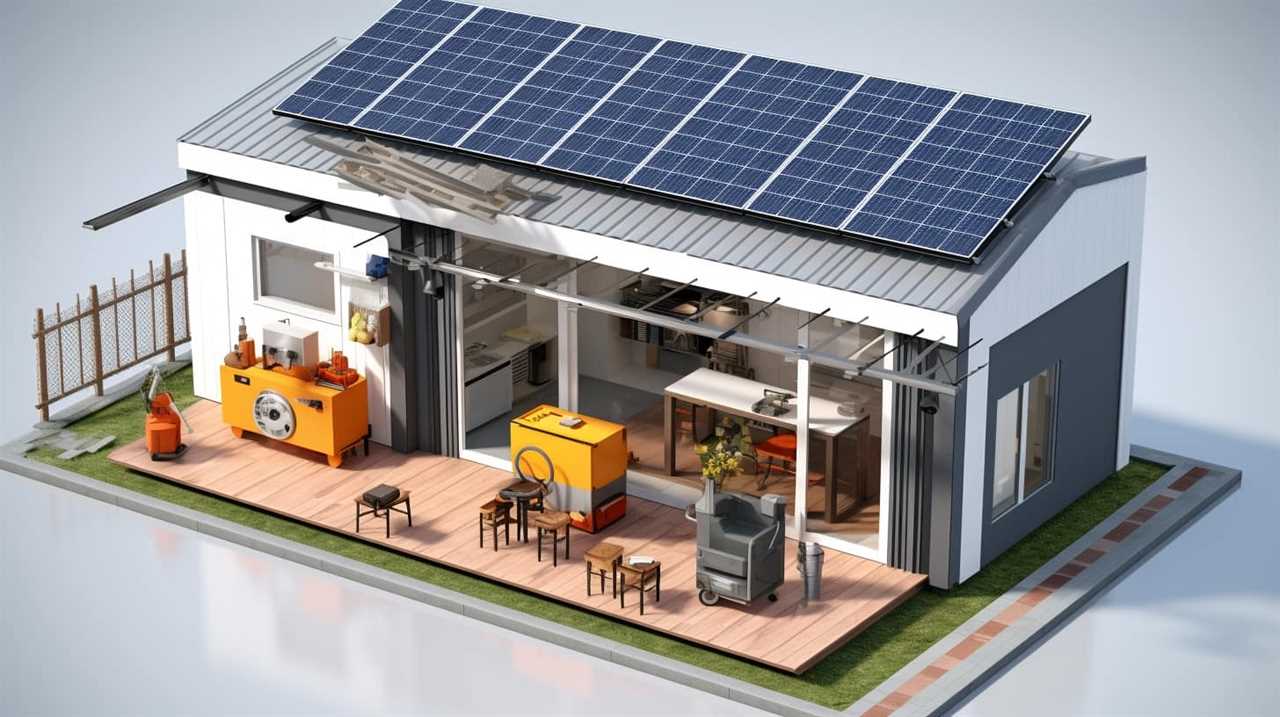
Aphids are small, pear-shaped insects that cluster on new leaves and buds.
Mealybugs are covered in a white, waxy substance and can be found on the undersides of leaves and in leaf axils.
Whiteflies, as the name suggests, are tiny white insects that fly around when disturbed.
An infestation of these tiny white bugs can cause significant damage to your house plants. Signs of infestation include yellowing leaves, stunted growth, distorted foliage, and a sticky residue called honeydew on the leaves. Furthermore, these pests can transmit plant diseases, weaken the plant’s immune system, and attract other pests.
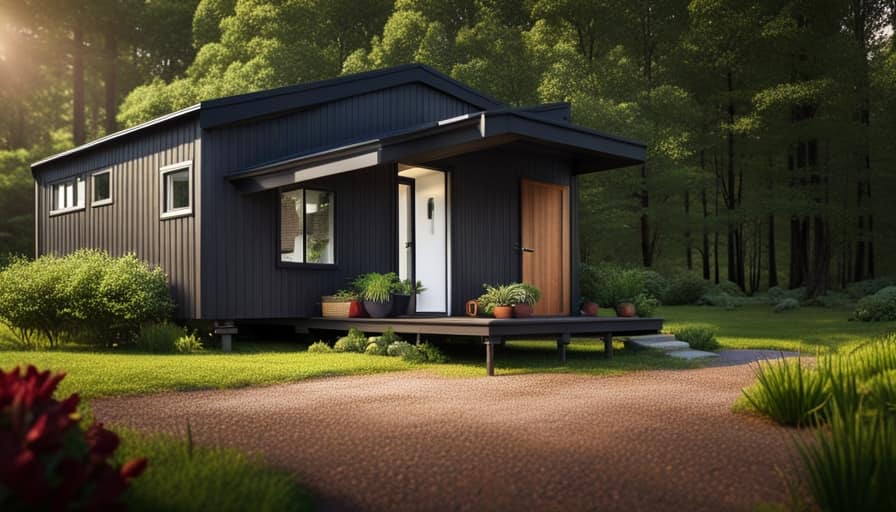
Understanding the causes of infestation is crucial in effectively getting rid of these tiny white bugs on your house plants.
Understanding the Causes of Infestation
Understanding the causes of infestation is essential in effectively eliminating these tiny white bugs on my house plants. Here are a few key factors to consider:
- Lack of proper plant care: Neglecting to provide adequate water, sunlight, and nutrients can weaken plants, making them more susceptible to bug infestations.
- Overwatering: Excessive moisture can create a favorable environment for pests like aphids and mealybugs.
- Bringing infested plants indoors: Introducing plants from outside without proper inspection can bring unwanted bugs into your home.
Recognizing the signs of bug damage is crucial for preventing infestation. Look out for yellowing, wilting leaves, sticky residue on leaves and stems, and tiny white bugs crawling on the plant’s surface.
Now that we understand the causes of infestation, let’s explore natural remedies to eliminate these pesky bugs.
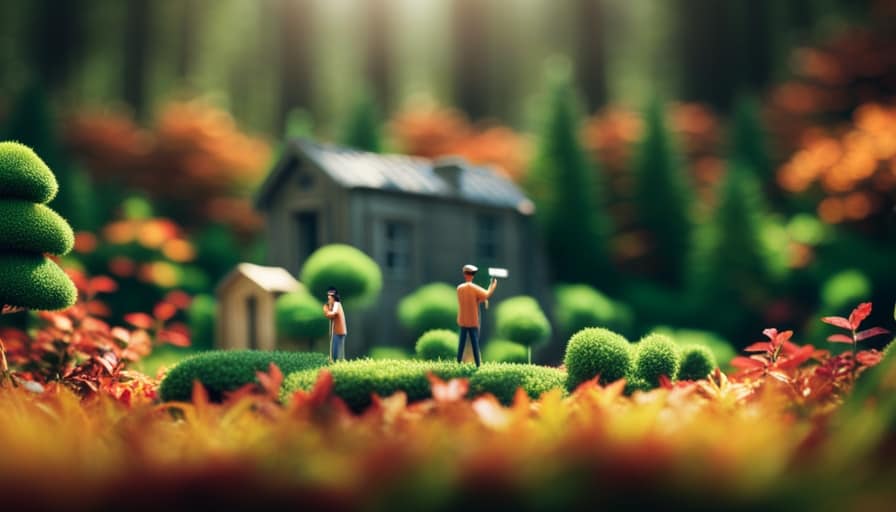
Natural Remedies to Eliminate the Bugs
To effectively get rid of these tiny white bugs on my house plants, I’ll need to rely on natural remedies that can eliminate them without harming the plants.
One effective option is to create homemade insecticides using ingredients readily available in your kitchen. You can mix a solution of water and dish soap, or water and neem oil, and spray it directly on the affected plants. These solutions work by suffocating the pests and disrupting their feeding patterns.
Another natural approach is to introduce insect-repelling plants into your garden. Plants like lavender, mint, and marigold emit fragrances that repel insects, keeping them away from your precious plants.
Chemical Solutions for a Lasting Bug-Free Environment
One effective chemical solution for achieving a bug-free environment is using a professional-grade insecticide spray. These sprays are specifically formulated to target and eliminate pests, including tiny white bugs on house plants. When using a professional-grade insecticide spray, it’s important to follow the instructions provided by the manufacturer to ensure safe and effective use.
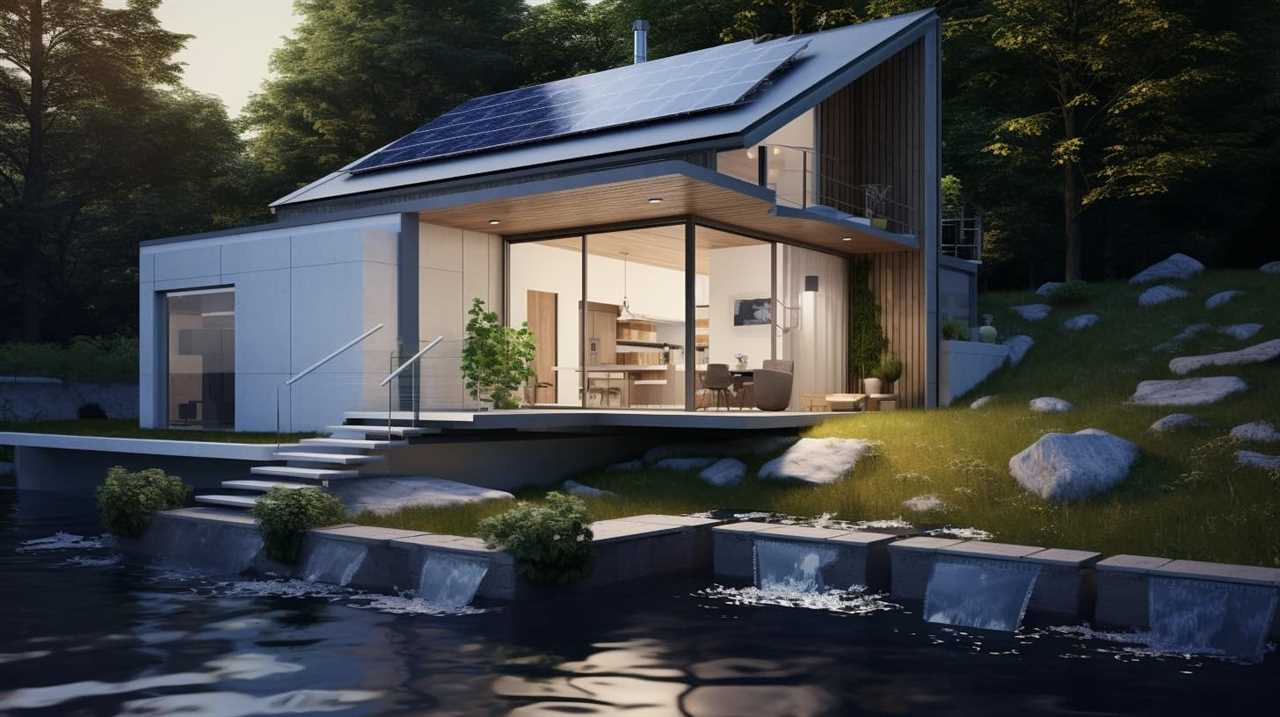
Additionally, consider these non-toxic alternatives to chemical solutions for pest control:
-
Neem oil: Derived from the neem tree, neem oil is a natural insecticide that can be effective against a wide range of pests. It works by disrupting the insect’s life cycle and repelling them from plants.
-
Insecticidal soap: Made from potassium salts of fatty acids, insecticidal soap works by suffocating pests on contact. It’s safe to use on most plants and can be an effective solution against white bugs.
-
Diatomaceous earth: This powdery substance is made from fossilized remains of diatoms and acts as a desiccant, drying out and killing insects.
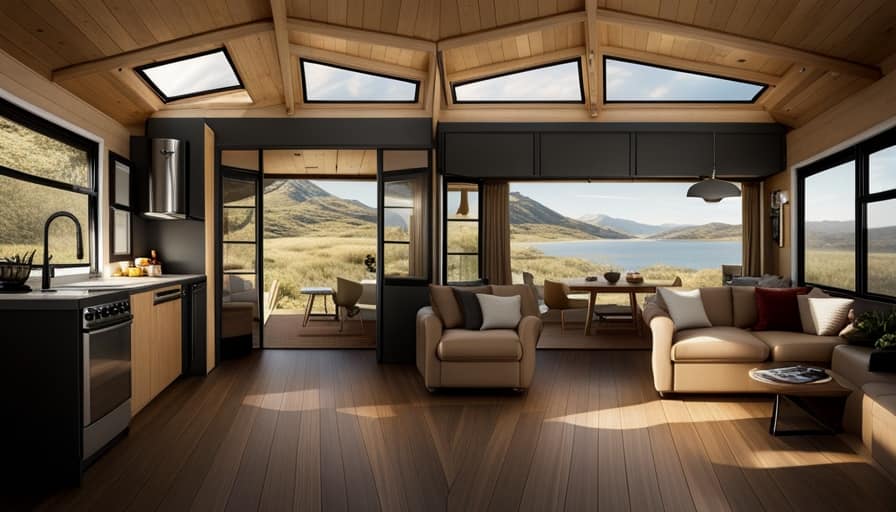
When using any chemical solution or non-toxic alternative, it’s essential to monitor the plants closely and repeat the treatment as necessary to maintain a bug-free environment. Professional pest control services can also provide expert guidance and assistance in achieving long-lasting results.
Preventing Future Infestations and Maintaining Healthy House Plants
To effectively prevent future infestations and maintain healthy house plants, I will implement a regular cleaning and inspection routine. This will help ensure that any signs of pests or diseases are detected early on and addressed promptly. Regularly cleaning the leaves and stems of my plants with a mild soap and water solution will help remove any dust or debris that can attract pests. Additionally, I will inspect the plants for any signs of infestation, such as white bugs or sticky residue on the leaves. To further enhance plant hygiene, I will also consider using beneficial insects, such as ladybugs or lacewings, which feed on common plant pests like aphids. By incorporating these practices into my routine, I can maintain healthy house plants and prevent future infestations.
| Regular Cleaning | Inspection Routine | Using Beneficial Insects |
| Remove dust and debris | Check for signs of infestation | Introduce ladybugs or lacewings to control pests |
| Promotes plant hygiene | Detect and address issues early | Natural pest control method |
| Prevents pest attraction | Maintain healthy house plants | Encourages ecosystem balance |
Frequently Asked Questions
Can These Tiny White Bugs Harm Humans?
Yes, tiny white bugs on house plants can harm humans. They can cause skin irritations and allergic reactions. It’s important to take steps to prevent infestations, such as regularly inspecting and cleaning your plants.
How Long Does It Take for Natural Remedies to Eliminate the Bugs Completely?
To completely eliminate the tiny white bugs using natural remedies, it typically takes a few weeks of consistent application. However, the effectiveness of these remedies can vary. It’s important to avoid common mistakes like under-applying or using incorrect remedies.
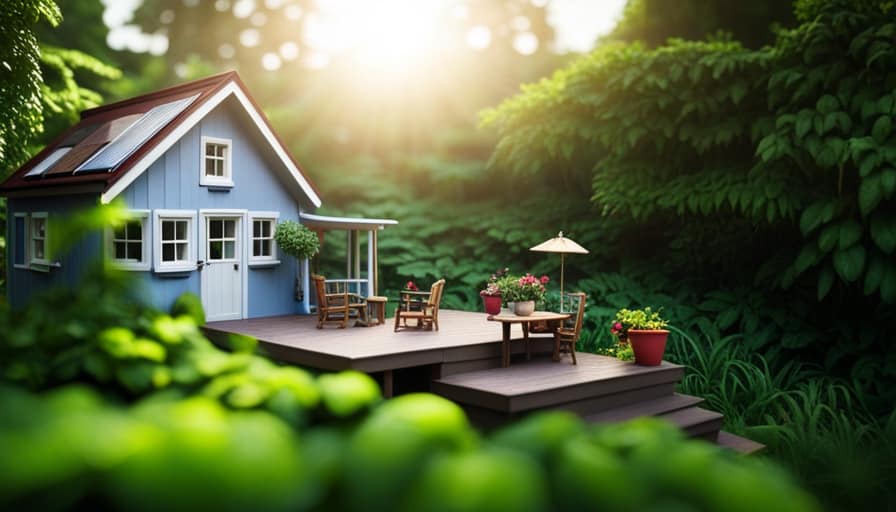
Are There Any Specific Types of House Plants That Are More Prone to Infestations?
Certain house plants, like lavender and marigolds, have natural repellent properties that can help prevent infestations. It’s important to choose plants that are known to repel bugs and to regularly inspect and clean your plants to avoid any potential infestations.
Can These Bugs Spread From One House Plant to Another?
Oh, the joy of tiny white bugs on house plants! Yes, these pests can spread from one plant to another. To control them, use insecticides and watch out for signs of infestation like sticky residue or wilting leaves.
How Often Should I Check My House Plants for Signs of Infestation?
I check my house plants for signs of infestation regularly to ensure their health. Common signs include tiny white bugs and yellowing leaves. Preventative measures like proper watering and cleaning can help keep plants bug-free.
Conclusion
In conclusion, taking care of our house plants goes beyond watering and sunlight. Identifying and eliminating tiny white bugs is a crucial part of maintaining a healthy environment for our plants.
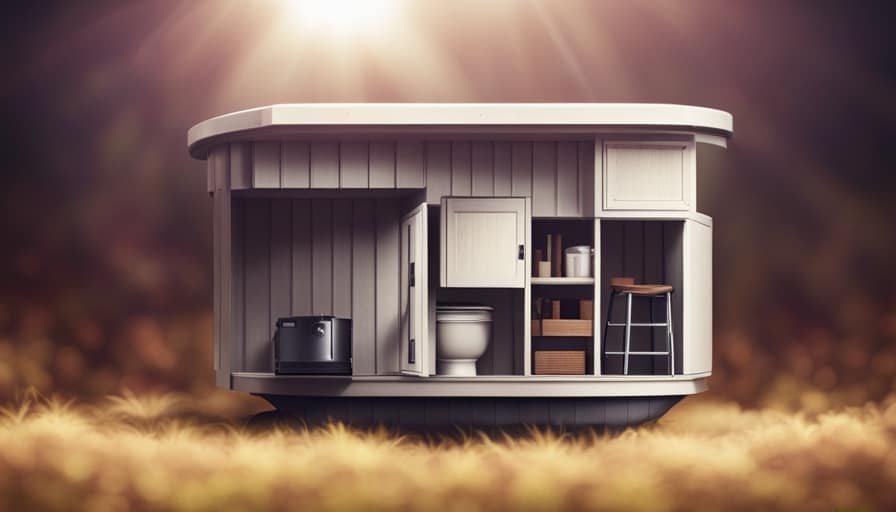
By understanding the causes of infestation and using natural or chemical remedies, we can ensure a bug-free environment. Remember, prevention is key, so regularly inspect your plants and take necessary measures to keep them thriving.
Happy gardening!
I’m Theodore, and I love tiny houses. In fact, I’m the author of Tiny House 43, a book about tiny houses that are also tree houses. I think they’re magical places where imaginations can run wild and adventures are just waiting to happen.
While tree houses are often associated with childhood, they can be the perfect adult retreat. They offer a cozy space to relax and unwind, surrounded by nature. And since they’re typically built on stilts or raised platforms, they offer stunning views that traditional homes simply can’t match.
If you’re looking for a unique and romantic getaway, a tree house tiny house might just be the perfect option.
Beginners Guides
How Do I Get Rid of Tiny Moths in My House

I have experienced the frustration of dealing with tiny moths flying around my food in the kitchen. But do not worry, I have a solution for you.
In this article, I’ll show you how to banish those pesky moths from your house for good. We’ll dive into identifying different moth species, understanding what attracts them, and simple prevention techniques you can implement.
Plus, I’ll share some natural remedies and professional options as a last resort. Say goodbye to those unwanted guests!
Key Takeaways
- Identifying the specific moth species is crucial for implementing targeted control measures.
- Moths are attracted to food sources, fabrics, and organic materials, so it’s important to store food in airtight containers and keep the house clean.
- Moths prefer dark, undisturbed areas to lay their eggs, so sealing cracks and openings in walls, windows, and doors can help prevent infestation.
- If natural remedies and DIY methods fail, it is advisable to seek professional pest control services for thorough inspection and tailored treatment plans.
Identifying the Culprits: What Type of Moth Is Invading Your Home
I can’t figure out what kind of moth is infesting my home. It’s frustrating not knowing the exact species, as different moths have different behaviors and habits. Identifying the culprits is crucial in order to effectively address the problem.
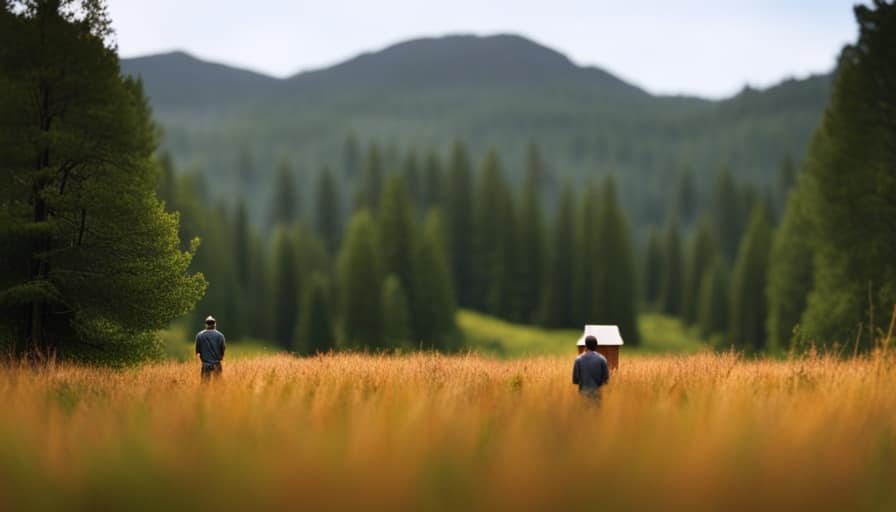
There are several common moth species that are known to invade homes, such as the Indian mealmoth, clothes moth, and pantry moth. Each species has distinct characteristics that can help with identification. Understanding their behavior is also important as it can give insights into their lifecycle and potential sources of infestation.
Moths are attracted to food sources, fabrics, and other organic materials. They can lay eggs in stored grains, textiles, or even pet food. By understanding the specific species and their behavior, it becomes easier to implement targeted control measures and prevent further infestations.
Understanding the Infestation: Why Are Moths Attracted to Your House
To effectively address the infestation, it’s essential to understand why moths are attracted to your house. Here are four reasons why moths may be flocking to your home:
-
Food sources: Moths are attracted to food, especially grains, cereals, and dried fruits. They can easily find their way into your pantry and feast on these items.
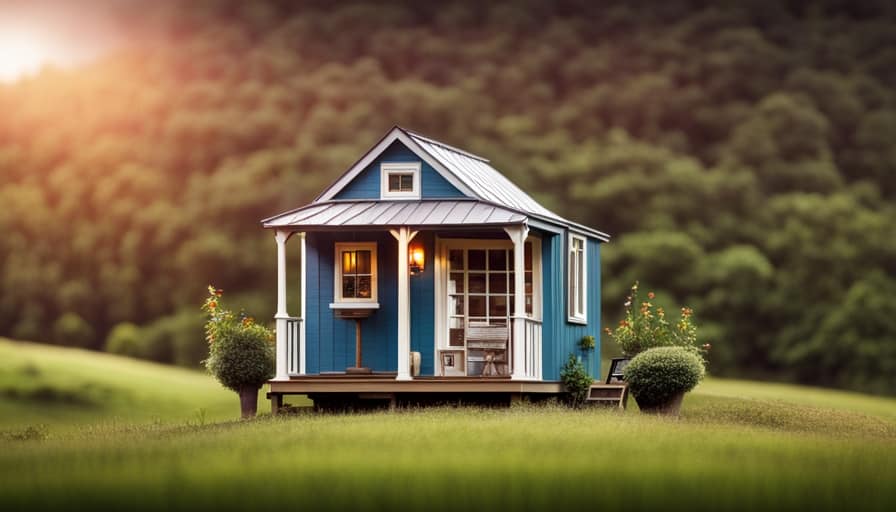
-
Moisture and humidity: Moths thrive in damp environments, making your house an ideal breeding ground if there are areas with high humidity or water leaks.
-
Suitable habitat: Moths are drawn to dark, undisturbed areas where they can lay their eggs undisturbed. This includes closets, attics, and basements.
-
Outdoor attraction: Moths can be attracted to your house from the outside, especially if you have outdoor lights that are left on at night.
Understanding moth behavior and their attraction to your house is crucial in preventing further infestation. By addressing these factors, you can take steps to keep moths at bay and protect your home.

Here are some moth prevention tips:
- Store food in airtight containers.
- Keep your house clean and free of crumbs or spills.
- Fix any leaks or moisture issues promptly.
- Use moth repellents or traps in vulnerable areas.
Prevention Is Key: Simple Steps to Keep Moths From Entering Your Home
Prevention is essential, so I’ll share some simple steps to keep moths from entering your home. By taking a proactive approach, you can create an inhospitable environment for moths and minimize the risk of infestations. One effective method is to use moth repellent products, such as sachets or sprays, in areas where moths are commonly found. These repellents contain chemicals that deter moths from entering your home. Additionally, it is crucial to seal any cracks or openings in your walls, windows, and doors. Moths can easily slip through these tiny gaps, so using caulk or weatherstripping can help keep them out. Regularly vacuuming and cleaning your home can also eliminate moth eggs or larvae that may be hiding in carpets or corners. By implementing these preventive measures, you can ensure a moth-free home environment.
| Steps to Keep Moths Away | |
|---|---|
| Use moth repellent products | Seal cracks and openings |
| Regularly vacuum and clean |
Natural Remedies: Non-Toxic Solutions to Get Rid of Moths
One effective way to get rid of moths naturally is by using a combination of vinegar and water to create a non-toxic moth spray. Here are some natural remedies you can try:
-
Vinegar and water spray: Mix equal parts vinegar and water in a spray bottle. Spray this solution on areas where moths are present, such as closets, drawers, and pantry shelves. The strong odor of vinegar repels moths and prevents them from laying eggs.
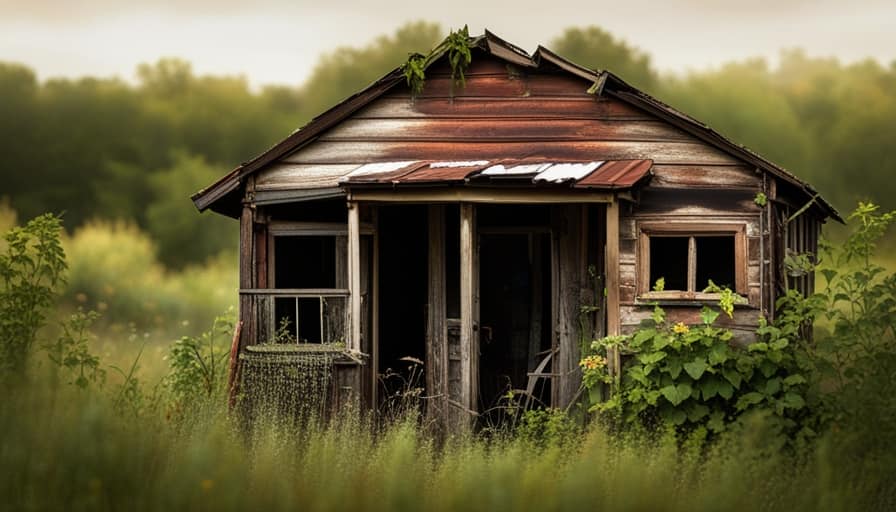
-
Cedar chips: Moths dislike the smell of cedar, so placing cedar chips in your closets and drawers can help deter them. You can also use cedar oil or cedar sachets for the same effect.
-
Homemade traps: Create simple moth traps by placing a mixture of vinegar, sugar, and dish soap in a bowl. The sweet scent attracts moths, and the dish soap traps them when they try to land on the mixture.
-
Lavender sachets: Moths are repelled by the fragrance of lavender. Place dried lavender in small sachets and tuck them in your clothing drawers or hang them in your closets.
These natural repellents and homemade traps can help you get rid of moths without using toxic chemicals. However, if these methods fail to eliminate the infestation, it may be time to consider professional pest control options.
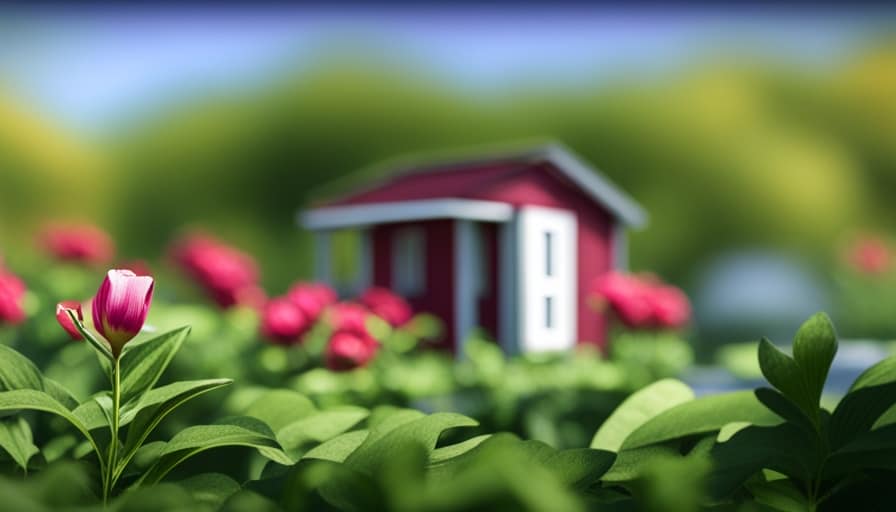
Last Resort: When All Else Fails, Professional Pest Control Options
If I’ve exhausted all other options, I’ll contact a professional pest control service to eliminate the moth infestation in my house. While natural remedies and DIY methods can be effective for small infestations, sometimes the problem persists or worsens despite our best efforts.
This is when it’s crucial to call in the experts. Professional pest control services have the knowledge, experience, and resources to effectively eradicate moth infestations. They’ll conduct a thorough inspection of your home to identify the source of the infestation and develop a tailored treatment plan.
The benefits of hiring professionals include their expertise in identifying different moth species, their access to specialized equipment and pesticides, and their ability to ensure the complete eradication of the infestation.
When all else fails, it’s best to rely on the expertise of professional pest control services to rid your home of those persistent moths.

Frequently Asked Questions
Can Moths Cause Any Damage to My House or Belongings?
Moths can cause damage to fabrics, carpets, and stored food. It’s important to address a moth infestation promptly. Using natural moth repellents, like lavender or cedar, can help deter them from your house and protect your belongings.
Are All Types of Moths Attracted to Homes, or Are There Specific Species That Are More Common?
In the world of moths, certain species have a penchant for our cozy homes. Understanding the types commonly found indoors can help us prevent the dreaded infestations from taking hold in the first place.
How Long Does It Usually Take to Get Rid of a Moth Infestation Using Natural Remedies?
Using natural remedies to get rid of a moth infestation can be effective, but the time it takes varies depending on the severity. Common signs of an infestation include sightings of adult moths and larvae, as well as damaged fabrics or food products.
Can Moths Carry Diseases or Pose a Health Risk to Humans?
Moths can transmit diseases to humans, so it’s important to take precautions. Individuals with allergies or asthma may experience respiratory issues due to moth infestations in homes.

Are There Any Specific Plants or Herbs That Repel Moths and Can Be Used as Natural Remedies?
Using natural moth repellents, such as specific plants and herbs, offers several benefits over chemical alternatives. Creating a moth repelling garden with lavender, rosemary, and mint can effectively deter moths from your house.
Conclusion
In conclusion, it’s essential to address the presence of these minuscule pests in your home promptly. By identifying the specific type of moth invading your space and understanding their attraction, you can take preventive measures to keep them at bay.
Utilizing natural remedies and seeking professional pest control services as a last resort will ensure a moth-free environment without compromising your household’s well-being.
Stay vigilant and employ these effective methods to bid farewell to these unwelcome visitors.
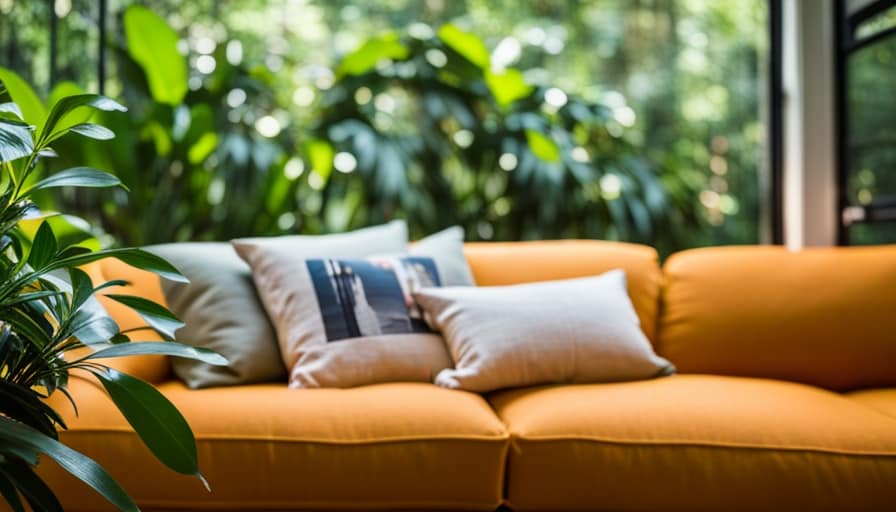
I’m Theodore, and I love tiny houses. In fact, I’m the author of Tiny House 43, a book about tiny houses that are also tree houses. I think they’re magical places where imaginations can run wild and adventures are just waiting to happen.
While tree houses are often associated with childhood, they can be the perfect adult retreat. They offer a cozy space to relax and unwind, surrounded by nature. And since they’re typically built on stilts or raised platforms, they offer stunning views that traditional homes simply can’t match.
If you’re looking for a unique and romantic getaway, a tree house tiny house might just be the perfect option.
Beginners Guides
How Difficult Is It to Build a Tiny House in Colorado Springs

I understand your concerns about building a tiny house in Colorado Springs. However, I can assure you that with the proper knowledge and guidance, it is completely achievable.
In this article, I’ll walk you through the zoning regulations, permitting process, finding suitable land, and navigating building codes. We’ll also discuss securing financing, budgeting, and dealing with utilities.
So, if you’re ready to embark on this rewarding journey, let’s dive in and make your tiny house dreams a reality.
Key Takeaways
- Zoning regulations and building permits are required for constructing a tiny house in Colorado Springs.
- Finding suitable land that complies with zoning regulations is important for placing a tiny house.
- Familiarizing oneself with local building codes and regulations, and following safety guidelines is necessary.
- Researching various financing options and presenting a detailed budget can increase the chances of securing financing for building a tiny house.
Zoning Regulations and Permitting Process
I’ll need to research the zoning regulations and permitting process before starting to build my tiny house in Colorado Springs. Understanding these regulations is crucial as they dictate where and how I can construct my tiny house.
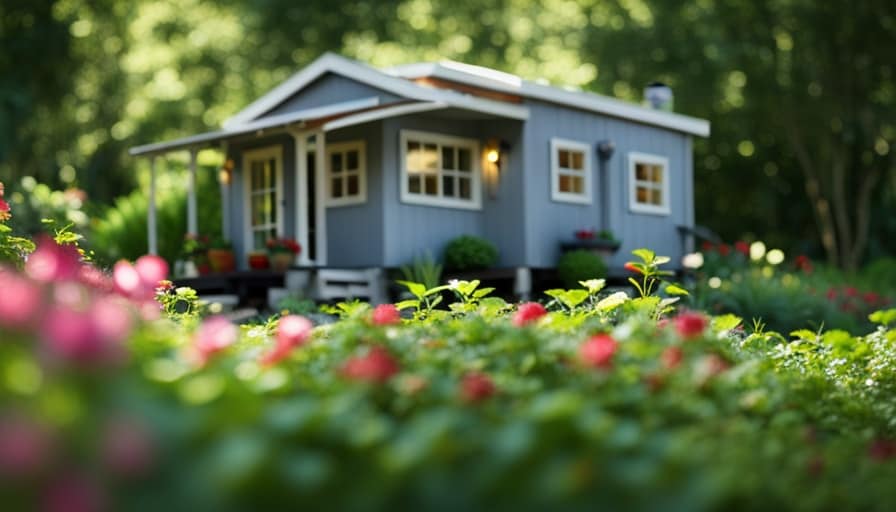
One key aspect to consider is the impact of tiny houses on property values. While some argue that they can decrease property values, others believe that they can actually increase them by adding diversity and uniqueness to the community.
Additionally, one of the challenges I may face is finding legal parking for my tiny house in urban areas. Many cities have restrictions on where tiny houses can be parked, making it essential to find suitable parking options that comply with local regulations.
With these factors in mind, I can now move on to finding suitable land for my tiny house.
Finding Suitable Land for Your Tiny House
After researching the zoning regulations and permitting process, it’s now time to start finding suitable land for my tiny house in Colorado Springs.
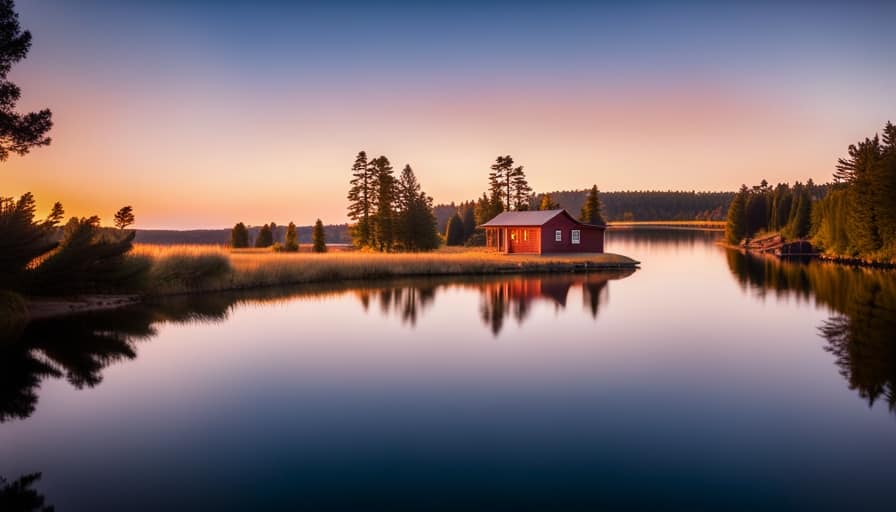
When it comes to finding land for a tiny house, there are a few important factors to consider. One of the major challenges is land availability constraints. Due to the increasing popularity of tiny houses, finding land that allows for their construction can be difficult. It’s important to do thorough research and explore different options, such as contacting local real estate agents or checking online platforms that specialize in tiny house-friendly land.
Additionally, environmental impact considerations are crucial. It’s important to choose a location that minimizes the impact on the surrounding environment and aligns with sustainable practices.
Taking these factors into account will ensure that I find a suitable piece of land for my tiny house in Colorado Springs.
Navigating Building Codes and Inspections
When it comes to navigating building codes and inspections for my tiny house in Colorado Springs, I’ll need to familiarize myself with the local regulations and ensure compliance throughout the construction process. Understanding local regulations is crucial to avoid any legal issues and ensure that my tiny house meets all the necessary requirements.
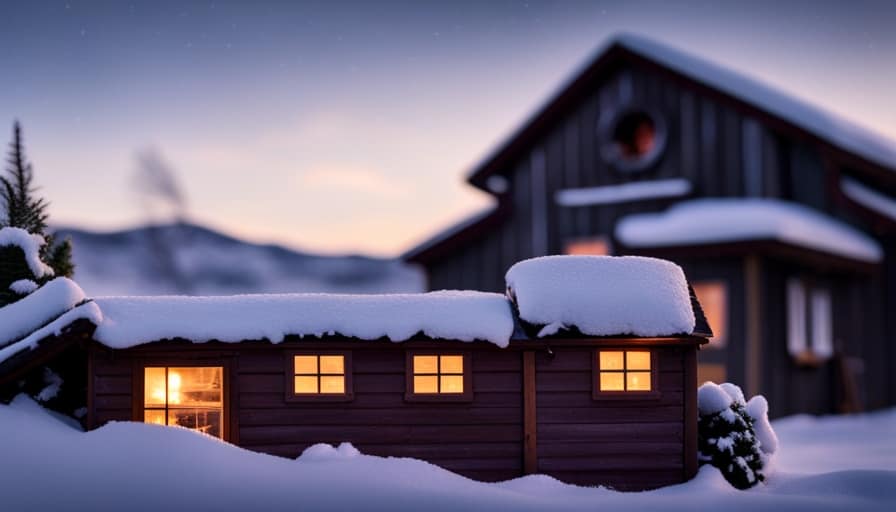
This includes obtaining proper permits, adhering to zoning laws, and following safety guidelines. To ensure a smooth process, I may consider hiring a professional builder who’s well-versed in local building codes and has experience with tiny house construction. Their expertise and knowledge will help me navigate the intricacies of the regulations and ensure that my tiny house is built according to the highest standards.
By understanding the local regulations and working with a professional builder, I can confidently proceed with my project while complying with all necessary codes and inspections.
With the building codes and inspections in mind, the next step is to secure financing and budget for my tiny house project.
Securing Financing and Budgeting for Your Project
To successfully secure financing and budget for my tiny house project in Colorado Springs, I frequently need to research various lenders and explore different funding options. Securing loans for a tiny house can be challenging, as it’s a unique type of project and not all lenders may be familiar with it. However, there are lenders who specialize in providing loans specifically for tiny houses.
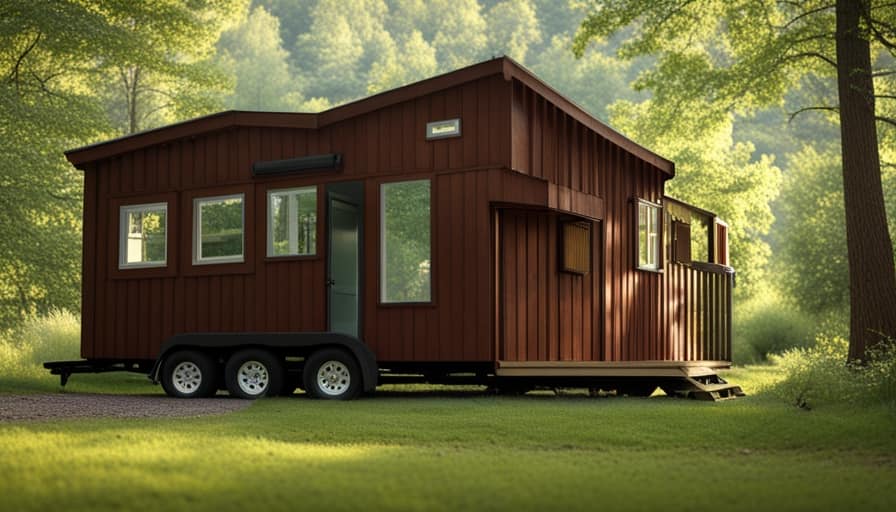
It’s important to gather all the necessary documents and information required by the lenders, such as the cost estimation of the project, including materials, labor, and any additional expenses. By presenting a thorough and well-prepared budget, it increases the chances of securing financing for the project.
Once the financing is secured, it becomes easier to move forward with the next steps of the project, such as dealing with utilities and exploring off-grid options.
Dealing With Utilities and Off-Grid Options
I can explore both traditional utility options and off-grid alternatives when dealing with electricity, water, and sewage in my tiny house in Colorado Springs.
When it comes to off-grid power, there are several options available. Solar panels are a popular choice, harnessing the energy of the sun to generate electricity. Wind turbines can also be used to generate power, particularly in areas with consistent wind patterns. Additionally, hydroelectric power can be harnessed if there’s a suitable water source nearby.
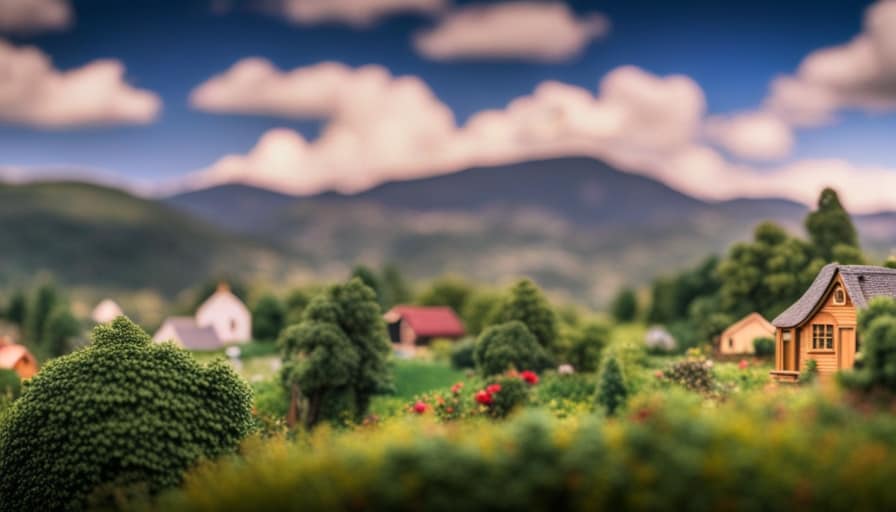
As for water sources, rainwater collection systems can be installed to capture and store rainwater for household use. Digging a well is another option, although it may require permits and additional expenses.
Lastly, composting toilets can be used to manage sewage in an off-grid tiny house, eliminating the need for traditional plumbing systems.
Frequently Asked Questions
What Are the Advantages of Building a Tiny House in Colorado Springs Compared to Other Cities in Colorado?
Building a tiny house in Colorado Springs has many advantages compared to other cities in Colorado. The city has a thriving tiny house community, supportive regulations, and an abundance of natural beauty to enjoy.
Are There Any Specific Design Requirements for Tiny Houses in Colorado Springs?
There are specific design requirements for tiny houses in Colorado Springs, including building regulations that must be followed. It is important to be knowledgeable about these requirements to ensure a successful and compliant build.

How Long Does the Zoning and Permitting Process Usually Take in Colorado Springs?
The zoning and permitting process in Colorado Springs can be a challenge. It takes time to navigate through the requirements and obtain the necessary approvals. However, with proper guidance and patience, it is possible to build a tiny house in Colorado Springs.
Are There Any Restrictions on Living in a Tiny House on Wheels in Colorado Springs?
Living in a tiny house on wheels in Colorado Springs comes with restrictions. Tiny house parking options are limited, and building codes for tiny houses must be followed. It can be challenging, but not impossible.
Can I Rent Out My Tiny House as an Airbnb in Colorado Springs?
Renting out a tiny house as an Airbnb in Colorado Springs is possible, but there are regulations to follow. It’s important to familiarize yourself with local zoning laws and obtain any necessary permits before listing your tiny house as a rental property.
Conclusion
Building a tiny house in Colorado Springs may be challenging due to zoning regulations, finding suitable land, navigating building codes, securing financing, and dealing with utilities.
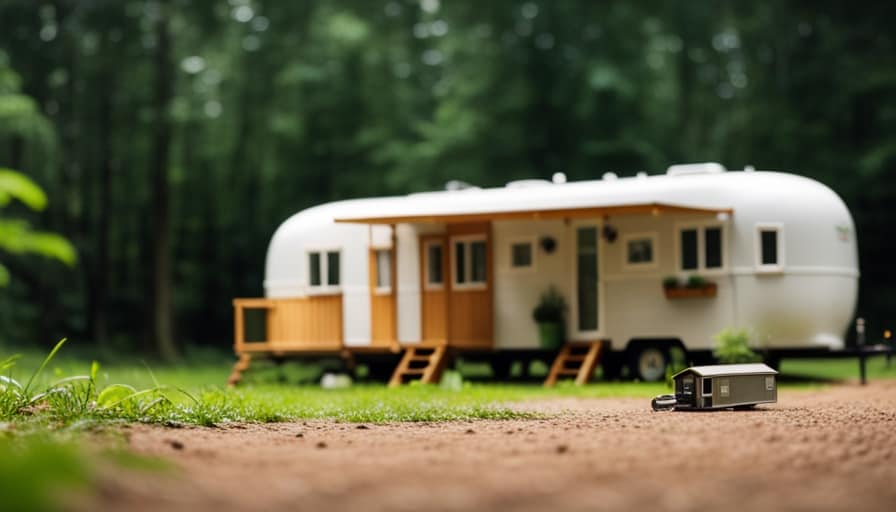
However, with determination and thorough research, it’s possible to overcome these obstacles.
For example, Sarah, a Colorado Springs resident, successfully built her own off-grid tiny house by carefully selecting land outside city limits, obtaining the necessary permits, and utilizing solar power.
Her experience demonstrates that with proper planning and knowledge, building a tiny house in Colorado Springs can be a rewarding and sustainable endeavor.
I’m Theodore, and I love tiny houses. In fact, I’m the author of Tiny House 43, a book about tiny houses that are also tree houses. I think they’re magical places where imaginations can run wild and adventures are just waiting to happen.
While tree houses are often associated with childhood, they can be the perfect adult retreat. They offer a cozy space to relax and unwind, surrounded by nature. And since they’re typically built on stilts or raised platforms, they offer stunning views that traditional homes simply can’t match.
If you’re looking for a unique and romantic getaway, a tree house tiny house might just be the perfect option.
-

 Beginners Guides2 weeks ago
Beginners Guides2 weeks agoHow To Buy A Tesla Tiny House
-

 Energy Efficiency2 months ago
Energy Efficiency2 months agoBest Tiny Homes For Cold Climates
-

 Beginners Guides1 week ago
Beginners Guides1 week agoTiny House Nation Where Are They Now Stephanie
-

 Tiny House Resources (e.g., legalities, cost, insurance, FAQs)2 months ago
Tiny House Resources (e.g., legalities, cost, insurance, FAQs)2 months agoDo Tiny Homes Need Planning Permission?
-

 Beginners Guides3 weeks ago
Beginners Guides3 weeks agoFrom The Show Tiny House Nation How Many Keep Their Tiny House?
-

 Beginners Guides2 months ago
Beginners Guides2 months agoUsing a Climbing Net For Treehouse Construction
-

 Beginners Guides2 months ago
Beginners Guides2 months agoHow to Build a Treehouse Without Drilling Into the Tree
-

 Beginners Guides3 weeks ago
Beginners Guides3 weeks agoTiny House Nation Who Pays For The Houses





